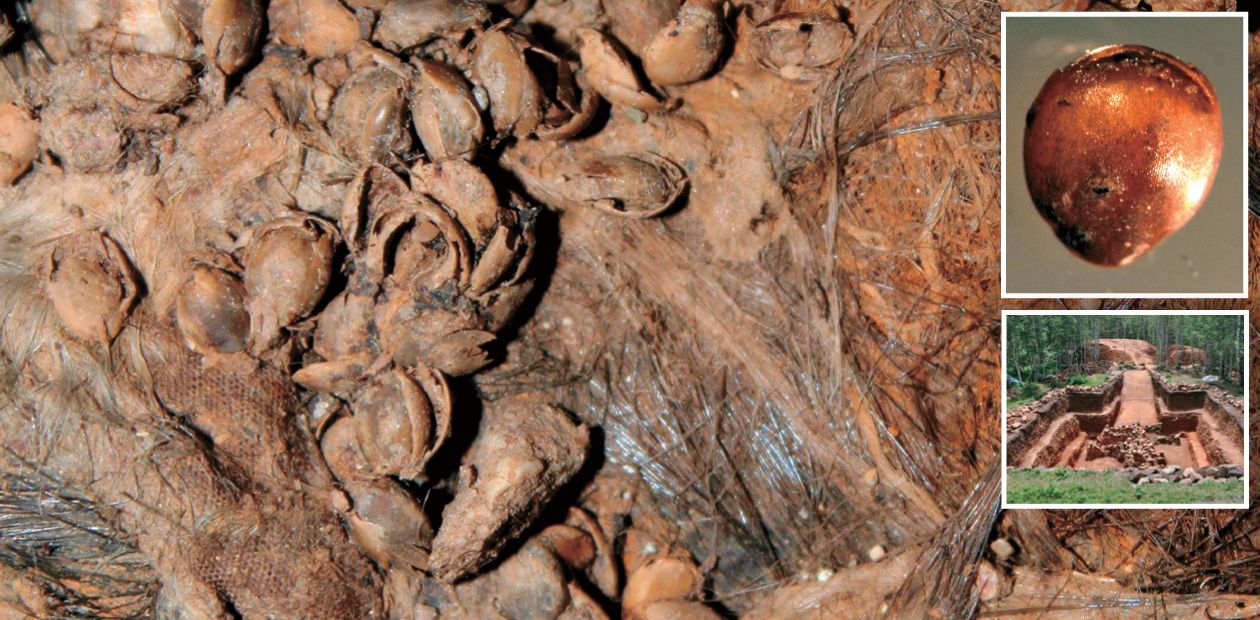And the Soul Will Revive as the Grains of Millet
Ancient burials deposit manifold pieces of information from the old times, which we are frequently unable to “read” in a correct manner and sometimes even to notice. Although the items in the burials are never accidental or insignificant, always being the most necessary and important according to the beliefs of that time, the absence of any written evidence allows us only to guess the purpose of an object, mineral, or plant in an ancient tomb. In order to establish the origin and purpose of the grain found in the burial mounds of high-ranking Xiongnu nomads, scientists had to conduct a real botanical and archaeological investigation
Similar to the seed slumbering in the bosom of Earth,
those dead also await their resurrection in a new guise
M. Eliade (1999)
In a typical “archaeological” situation, the researchers excavating burial constructions usually deal with the objects made of inorganic materials. Well preserved organic items are a rare “lucky chance” for archaeologists because it allows them to see more and go farther in their reconstruction of the remote past.
The mounds of Xiongnu nomads in the Noin-Ula Mountains (Northern Mongolia), excavated by Soviet–Mongolian archaeological expedition in 2006—2012, rank among such rare finds.
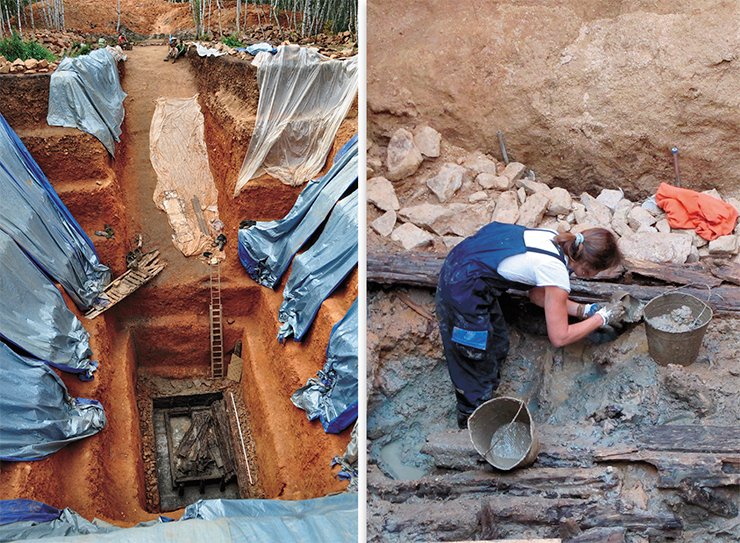
The elite of these nomad people spent their entire life on horseback and their main food, similarly to any Central Asian nomads, was milk and meat with a minor share of wild crops. It would seem that grain, a typical agricultural product, does not fit in their burials. Nonetheless, in addition to manifold artifacts, plant remains in the form of scattered grain have been found in each of the four recently examined Xiongnu mounds.
What is this grain and why was it placed to the burials of nomadic nobility two thousand years ago?
Research detective story
Archaeological findings of organic matter (in particular, plants) are, as a rule, unique; this material is rarely “massive.” The difficulty of identifying such specimens is that the plant remains in burials are only partially preserved. Actually, such a study is similar to a detective story particularly interesting to unravel.
A set of specific vegetative and generative features of plants, the so-called diagnostic characters, allows a plant specimen to be taxonomically identified at a family, genus, or species level. Using specialized plant keys, any person with certain knowledge of botanical terminology can classify any plant provided that the specimen has a complete set of organs (flowers, shoots with leaves, fruits, and underground organs), at least its family or genus. As for the species or subspecies identification, this is for experts.
In the Noin-Ula Xiongnu mounds, the plant remains represented by seeds were rather uniform. A compressed layer (no thicker than 0.5 cm) of pant remains covered the felt carpet on the wooden floor of the burial chamber in the 20th mound and a wool cloth covering the floor in the 31st mound. The layer of compressed seed in the 22nd mound was found on bottom of the coffin, and separate grain clusters also lay along the northern wall of the internal burial chamber; presumably, the latter grains were initially placed into small cloth bags, which later decayed.
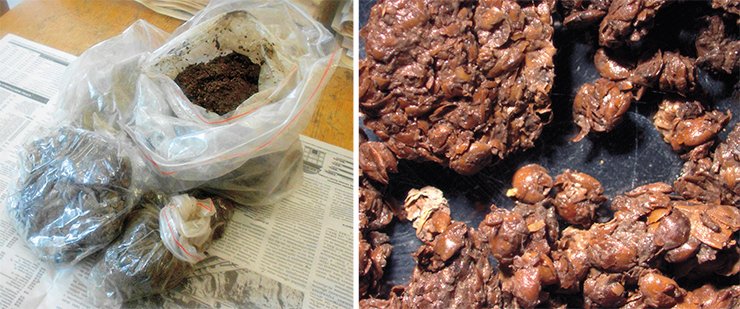
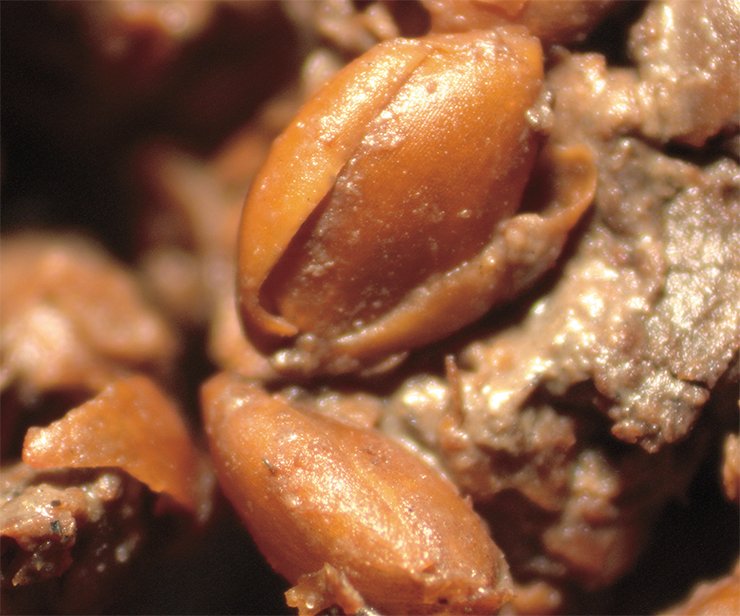
In this case, researchers had only poorly preserved seed remains and rare fragments of inflorescences without any other plant vegetative parts, that is, poorly threshed grain. As a result, there were only a few characteristics available to identify the genus or species of the plant, namely, the shape and size of the caryopsis* as well as the surface pattern of the lemmas.
THE FIRST NOMADIC EMPIREDuring the entire period of their standoff, the Xiongnu were offered tribute disguised as gifts from the Han emperors for the peace on their borders. However, this did not prevent the nomads from constant military raids onto the frontier territories for trophies such as cloth, metal items, and various agricultural products. The total volume of the spoil was vastly superior to the emperor’s gifts; in addition, the Xiongnu brought with them local people as prisoners.
By the end of the 1st century A.D., the Xiongnu Empire ceased to exist, but the Xiongnu people did not disappear from the historical map and went to conquer Europe together with other nomadic people
Based on their external appearance, the grains from burials were initially identified as seeds of bread cereals. The caryopsis shape and size immediately pointed out that these could not have been rice, corn, rye, wheat, oat, barley (the main bread crops raised in this area) or some wild cereals. The specimens found in the burials could belong to the tribe (group of genera) of the extant millet (Paniceae R. Br.) or beard grass (or sorghum, Andropogoneae Dum.) species, which incudes many cultivated cereals.
Millet through a microscope
In order to reliably identify a plant based on its single and, moreover, poorly preserved part, it is necessary to refer to herbarium collections of the largest botanical repositories, the most valuable part of the cultural heritage of any country. In our case, we had to examine, first and foremost, the largest herbarium stocks of cultivated cereals with the All-Russia Institute of Plant Industry (St. Petersburg, Russia; VIR) and, certainly, the collections housed at the Central Siberian Botanical Garden, Siberian Branch, Russian Academy of Sciences (Novosibirsk, Russia; NS), which offer vast background information about Siberian wild and cultivated plants.
The extant group of millet species contains several bread crops, including the common, foxtail, and pearl millets. The group of beard grasses comprises about one hundred genera, mainly growing in tropical and subtropical areas, in particular, the sugar cane, sugar sorghum, and Japanese sorghum or kaoliang (Cereals of the USSR, 1976). In the temperate latitudes, the food and forage beard grass species, such as durra sorghum and sugar sorghum, have been raised since olden times.
Thus, it is no wonder that a seemingly easy question asked by an archaeologist –“Is this millet or chumisa?”– may well puzzle a botanist
In order to exclude erroneous identification of archaeological specimens, they were comprehensively compared with the caryopses of various “food-grade” millet and sorghum representatives from different geographic regions of the temperate climate zone. All the grains of sorghum species have appeared to be larger as compared with the millet. Thus, the grains from the Xiongnu burials most likely belong to a millet species, or more precisely, the common millet.
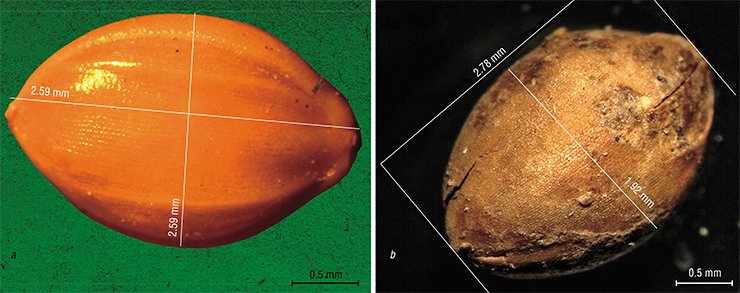
As an additional verification of this inference, we have compared the surface morphology of the millet lemma. These characters are regarded as considerably conserved and are frequently used as diagnostic traits in systematics.
The specific morphological features of the lemma surface include, in the first place, the shape, size, and thickness of the integument cells as well as the surface relief pattern that they create (Nikolaevskaya and Petrova, 1989). The epidermis of common millet lemma is thick and is covered with a protective layer (cuticle); thus, it was possible to see the surface pattern formed of integument cells only in the caryopsis fragments where this layer was destroyed. As for the modern specimens, they were specially treated to dissolve the cuticle (Vural, 2008).
Comparison of the specific lemma features confirmed the assumption that the seeds found in the Xiongnu burials were grains of the common millet (Panicum miliaceum L.).
Millet in emperor’s style
As is known, grain was an important part of the gifts that the Han China used to “purchase” peace on their borders from the Xiongnu. The millet was the major cereal crop that reached the Xiongnu. Rice was also mentioned among the crops supplied to the Xiongnu; however, rice was an expensive even in China itself. At that time, rice was cultivated only to the south of the Central Plain, and was not typical of more northern areas, although there were small rice plots there.
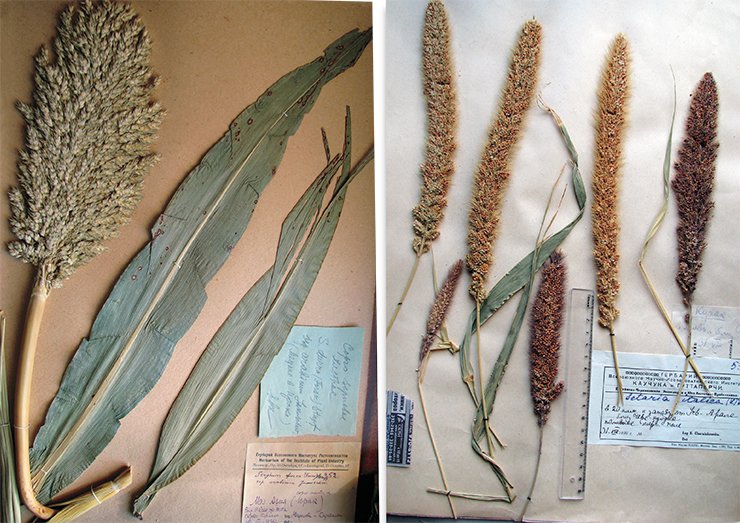
The Han gifts of grain were not too large (about 100,000 liters annually) and most of it must have remained in the headquarters of chanyu, the Xiongnu supreme governor (Kradin, 2002).
According to written sources, Han China used grain shelled to a different degree: coarsely shelled, shelled, well shelled, and highest quality (Kryukov et al., 1983). At that time, a specialized tool, the hulling machine, was already used for grain thrashing; it was a crushing stone with a lever, driven by foot (Kryukov et al., 1983). In his treatise Discourses on Salt and Iron, the most important source of information about the Western Han Dynasty (2nd –1st centuries B.C.), Huan Kuan, paying a tribute to the modest manners of ancient times, mentions the meals of well-boiled and well-shelled high-quality grain along with the other luxuries that appeared at that time.
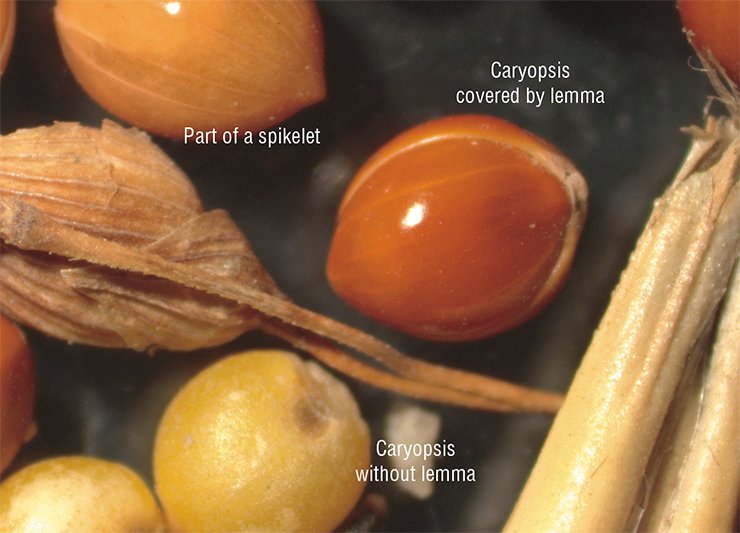
Millet porridge, so popular in Russia, is cooked of common millet (P. miliaceum L.) grains, the plant that does not occur in wild nature. This is an annual grass 20 to 240 cm high with a simple or a branched stem. The hairy leaves are linear lancet-shaped; inflorescences are loosely spread or dense panicles, erect or drooping. The spikelets are at the end of long branchlets. By the time of fruit ripening, the differently colored lemmas harden.
The fruit is a chaffy caryopsis (grain); the mature grains are small (2—3 mm in length), ball-shaped or oval, with tightly fit lemma. There are several intraspecific classifications of common millet mainly based on the panicle shape, fruit shape and color, and the ecological and geographical conditions of its growth.
Common millet is confined to the warm and temperate zones, mainly of the northern hemisphere. It is most widely raised on the territory of the Former Soviet Union and in China. To produce dry substance, millet needs half as much water as wheat; therefore, it tolerates well the summer heat and drought. The total area of millet crops worldwide amounts to tens of millions of hectares
However, the grain discovered in the three high-rank Noin-Ula mounds hardly had any relation to the Emperor’s supplies, since this grain was roughly shelled or unshelled at all. As for the gifts to the Emperor’s household, they were only high quality well-shelled grain, as was specially stipulated.
To raise, to exchange, or to grab?
Note that the climate in some Mongolian regions was always favorable for raising millet it is just that the nomads had no need to do farming. This new foodstuff did not play any significant part in the nomadic life necessities, and they could easily do without these meals; thus, the “nomadic” diet could be only temporarily expanded under the influence of the neighboring agricultural civilization.
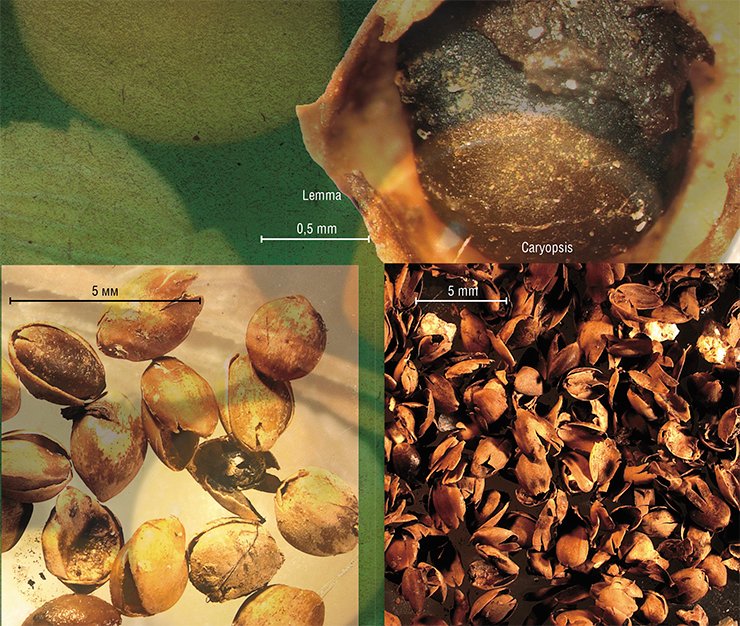
A.P. Okladnikov, an outstanding Russian archaeologist and historian, believed that “until recent times, arable farming in Mongolia was present only in the regions directly influenced by the Chinese. As for the other areas where original stock-raising culture prevailed, crop farming was so alien to Mongols that digging the ground was even believed to be dangerous. The demand for plant food was satisfied by foraging (Okladnikov, 1962, pp. 424–425). According to Okladnikov, archaeological materials and written sources suggested that another source of plant food for the Hunnish nomads were farming colonies, in particular, the colonies of Chinese prisoners (Okladnikov, 1962, p. 431).
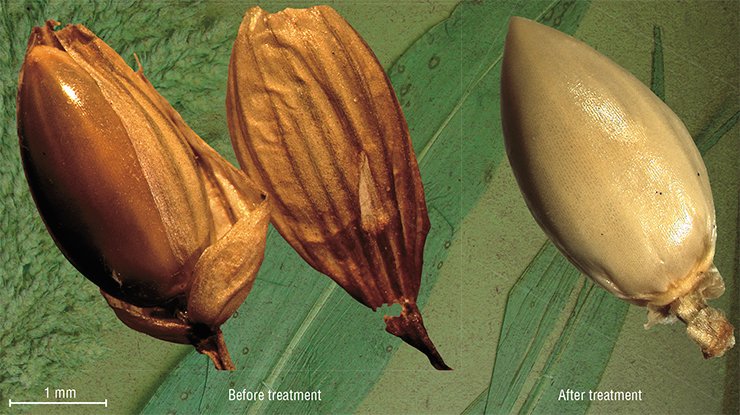
Thomas Barfield, a well-known American researcher of Central Asia, agrees with Academician Okladnikov. According to Barfield, some grain could have been grown in the steppes; however, early frosts, which often occurred in Mongolia, made its production doubtful. Also, grain cultivation was incompatible with nomadic wandering, although part of the population (or Chinese prisoners in some periods) was presumably involved in this activity (Barfield, 2008, p. 24).
Under favorable conditions, the population of ancient settlements located on the Xiongnu territory and consisting of prisoners of war and defectors could also raise crops and supply local nomads with grain. In particular, this hypothesis is confirmed by the studies in the Ivolga settlement in Transbaikalia (Davydova, 1986). The Yuhuan tribes, living in South Manchuria and conquered by the Xiongnu, were also involved in crop farming – it is known that they raised millet (Bichurin, 1950). Part of the harvest, along with leather and sheepskins, could have been handed to the Xiongnu as a tribute.
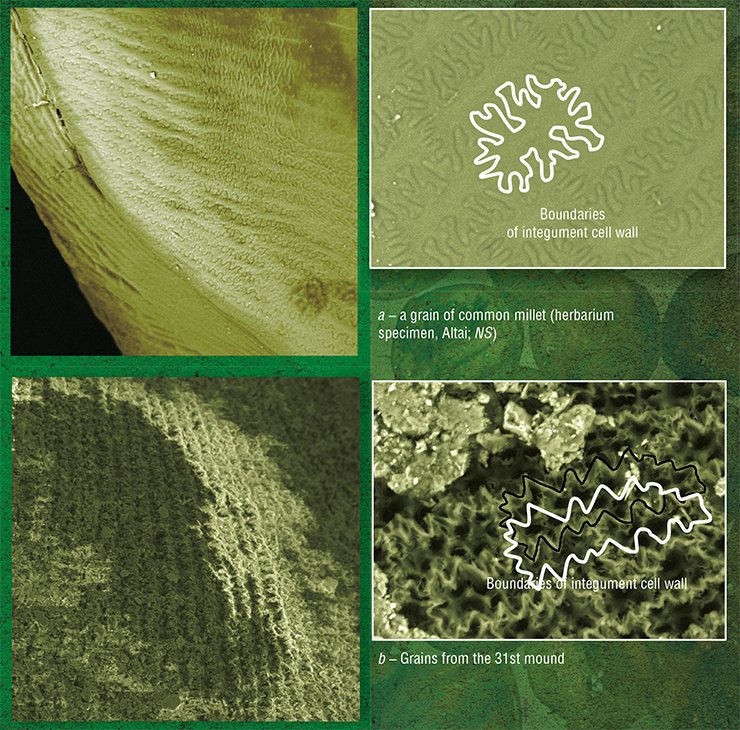
The Xiongnu could also obtain roughly shelled millet grain in another way. For example, there were periods in the history of interaction between the Han Empire and Xiongnu when markets were opened at frontier posts; there, nomads could satisfy their needs, in particular, in grain, by exchange. Another option was raids upon near-border Chinese settlements, when the Xiongnu robbed much more goods than the gifts given to them. As a rule, the raids were made after harvesting: “When the crop ripens, we will send our cavalry to harvest it,” threatened the Xiongnu (Chien, 202, p. 337).
Now, what was the purpose for placing the millet, obtained in one way or another, into the burials of the Xiongnu elite? To answer this question, it is necessary to pay attention to the place of discovery of these finds.
The road to immortality
As is mentioned above, archaeologists found millet grains on the floor of burial chambers in the three examined mounds and on the carpet inside the coffin.
In the 23rd mound, studied as long ago as in 1924 by the expedition of P.K. Kozlov, millet grains were found in “clayish mud,” which filled the burial chamber, i.e., the grains were also scattered around on the floor (Rudenko, 1963). A similar find was made in the Xiongnu burial ground of Gol-Mod (Arakhangi aimag, Mongolia) explored by a French–Mongolian expedition: the floor of the burial chamber was covered with grains looking like millet or hemp, similar to it (Mongolia. Le premiere empire…, 2003).
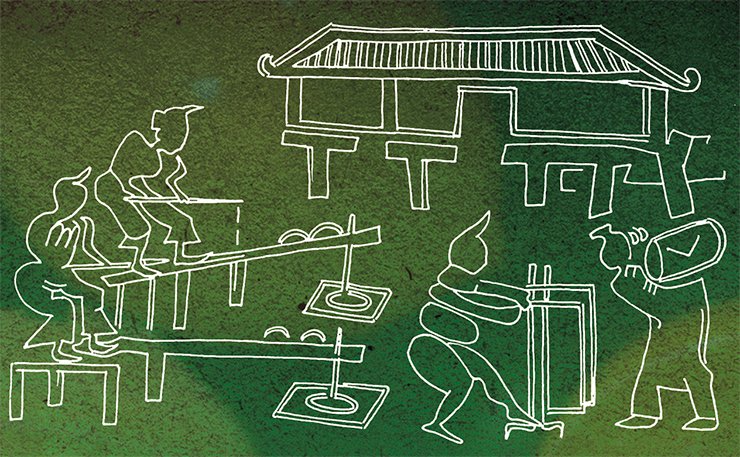
It looks as if the millet in these burials is present not as food, unlike, for example, a burial in the Cheremukhovaya pyad’ burial ground of the Xiongnu (Transbaikalia), where the millet, only the grain hull of which left, was found in a clay pot (Konovalov, 1976, p. 40) or in the 11th Noin-Ula mound, where remains of the millet or a meal cooked of it was also found on the bottom of a pot.
Note also that the description of a Han burial in the Hubei Province says that a layer of millet grains was spread in the coffin (A Brief Report on Excavations..., 1981). Presumably, roughly shelled grain in the Xiongnu burial rite played the same role as in the corresponding ritual of the Hans. So, what was this role?
In ancient China, millet was not a mere valuable foodstuff; it was also used for sacrifices in the temples of forefathers. They even had special containers for such offered grain. Also, millet grain was used for making wine, which among the other select dishes was offered to gods, forefathers, and spirits (Vasil’ev, 2001).
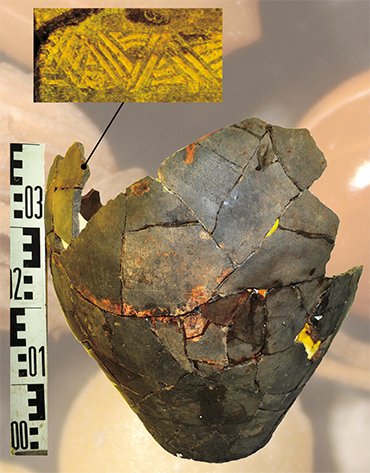 “The Lord of Millet” in ancient China was Hou-Tsi, the god of grain and patron of crop farming, who was also regarded as the ancestor for the Chou clan. In The Classic of Mountains and Seas, an ancient source on Chinese mythology and ethnography (4th–1st centuries B.C.), there was even a Millet Lake with the Immortality River running into it (Huan II, Book 3, 14).
“The Lord of Millet” in ancient China was Hou-Tsi, the god of grain and patron of crop farming, who was also regarded as the ancestor for the Chou clan. In The Classic of Mountains and Seas, an ancient source on Chinese mythology and ethnography (4th–1st centuries B.C.), there was even a Millet Lake with the Immortality River running into it (Huan II, Book 3, 14).
Moreover, ancient texts frequently identify Lord Millet with the grain itself (Yanshina, 1984). The ancient Chinese treatise Interpretation of Rituals and Traditions (approximately 140–206 A.D.) says that “Millet dominates over all breads. There are too many kinds of breads (cereals), and it is impossible to offer sacrifices to each. Therefore, Lord Millet was selected, and sacrifices are offered to Him” (Book 8, p. 1a).
A special role of millet in the ancient Chinese mythology is associated with the fact that it was one of the first cereal cultures domesticated in that country, which happened approximately 10,000 years ago (Liu and Kong, 2004). This choice is attributed exclusively to millet’s high drought tolerance, the ability to give yield over a short vegetation period and on poor soil, and long “shelf life.” Consequently, this cereal species in the ancient Chinese farming civilization played the same role as wheat and barley for the famous ancient civilizations of the so-called Fertile Crescent, the Middle East region covering the territories of contemporary Lebanon, Israel, Syria, Iraq, and Egypt.
It was believed in ancient China that millet grains placed in a burial should help the dead to resurrect. “The plant life that resurrects through an apparent disappearance (when seeds are planted in soil) gives human beings the hope that the souls of the dead may also follow this way” (Eliade, 1999, p. 330).
The archaeological discovery made in the Xiongnu mounds suggests that the special attitude to millet, characteristic of Chinese culture, was adopted by the neighboring nomads and, similarly to many other traditions of the agricultural Han civilization, appeared in the burial rite of the elite nomads.
The authors are grateful to A.A. Krasnikov, head of the joint access center for microscopy with the Central Siberian Botanical Garden (Novosibirsk, Russia), I.G. Chukhina and T.N. Smekalova (All-Russia Institute of Plant Industry, St. Petersburg, Russia) for their assistance in the study, and to A. Chistyakov (Institute of Archaeology and Ethnography, Novosibirsk, Russia) for translation from the Chinese
References
Zlaki SSSR. Cvelev N. N./Otv. red. An. A. Fedorov. L.: Nauka, Leningr. otd-nie, L., 1976. 788 s.
Lysov V. N. Proso // Kul’turnaja flora SSSR. T. 3. Krupjanye kul’tury (grechka, proso, ris). L.: Kolos, Leningr. otd-nie, L., 1975. S. 119—236.
Koroljuk E. A Polos’mak N. V. Rastitel’nye ostatki iz zahoronenij v 20 i 31 kurganah mogil’nika Noin-Ula (Severnaja Mongolija) // Arheologija, jetnografija i antropologija Evrazii. N.: Izd-vo IAJeT SO RAN, 2010. № 2 (42). S. 57—63.
Kradin N. N. Imperija hunnu. M.: Logos. 2002. 312 s.
Rudenko S. I. Kul’tura hunnu i noin-ulinskie kurgany. M.-L.: Izd-vo AN SSSR, 1962. 203 s.
Polos’mak N. V., Bogdanov E.S., Cjevjejendorzh D. Dvadcatyj noin-ulinskij kurgan. N.: INFOLIO, 2011. 184 s.
Polos’mak N. V., Bogdanov E. S. Na 18 metrov v glubinu vekov // NAUKA iz pervyh ruk. 2006, № 6 (12). S. 15—23.
Cvelev N. N. Zlaki SSSR. Otv. red. An. A. Fedorov. L.: Nauka, Leningr. otd-nie, L., 1976. 788 s.
The work was supported by the Russian Foundation for Basic Research (project no. 08-04-01021) and Gerda Henkel Stiftung (grant no. АZ 12/ZA/12)
* Caryopsis is a one-seeded, indehiscent fruit with the pericarp fused to the seed coat


